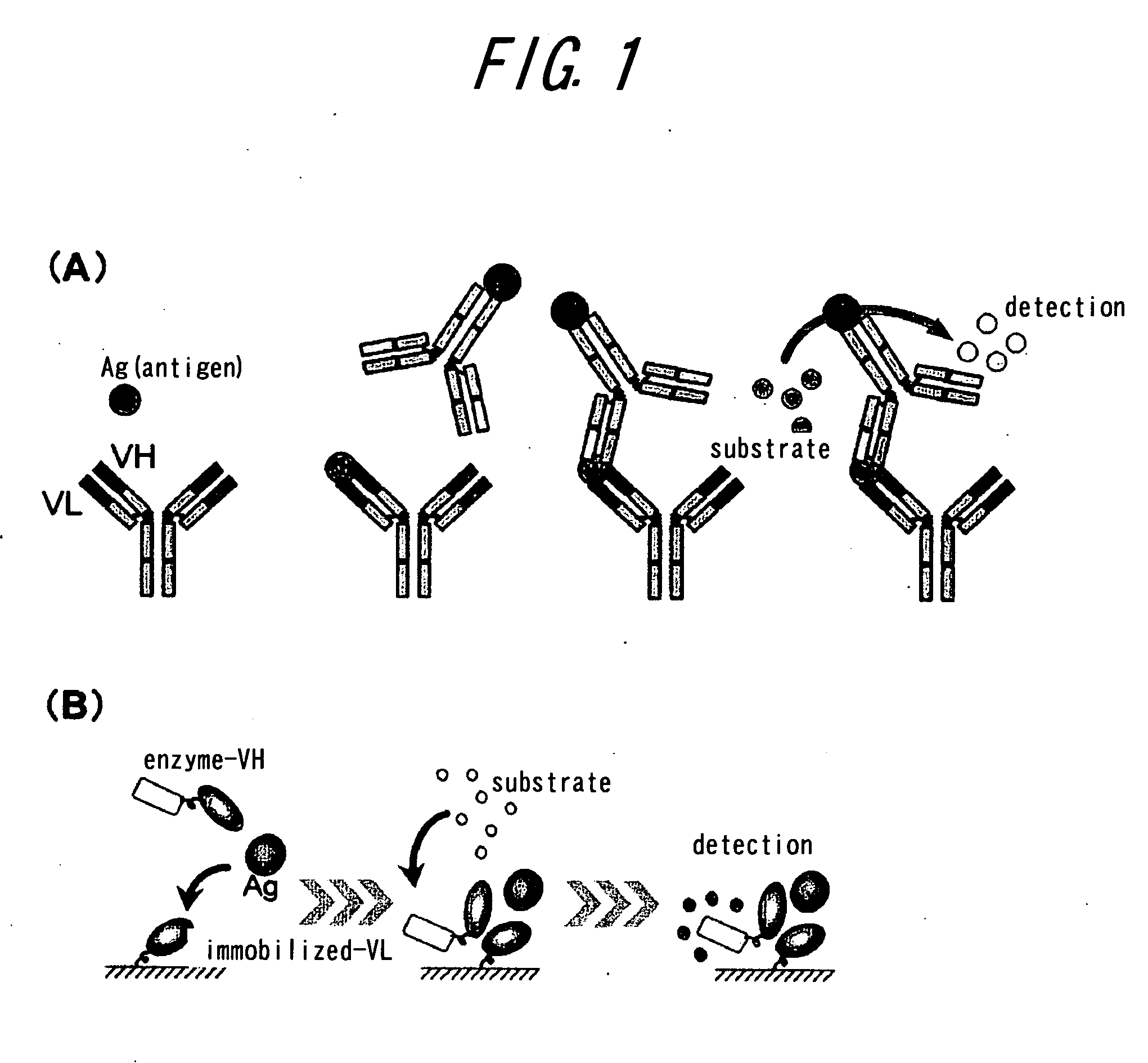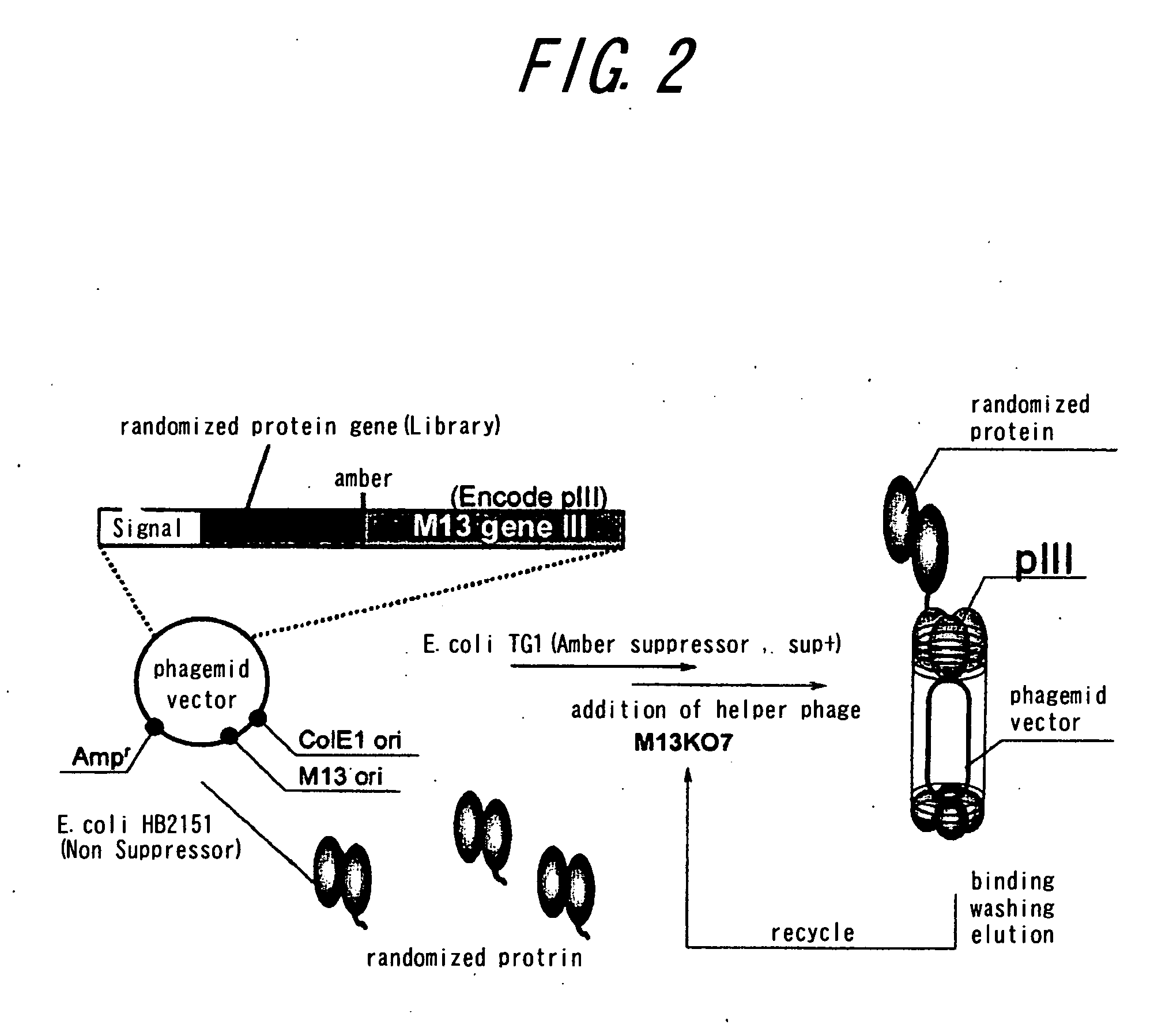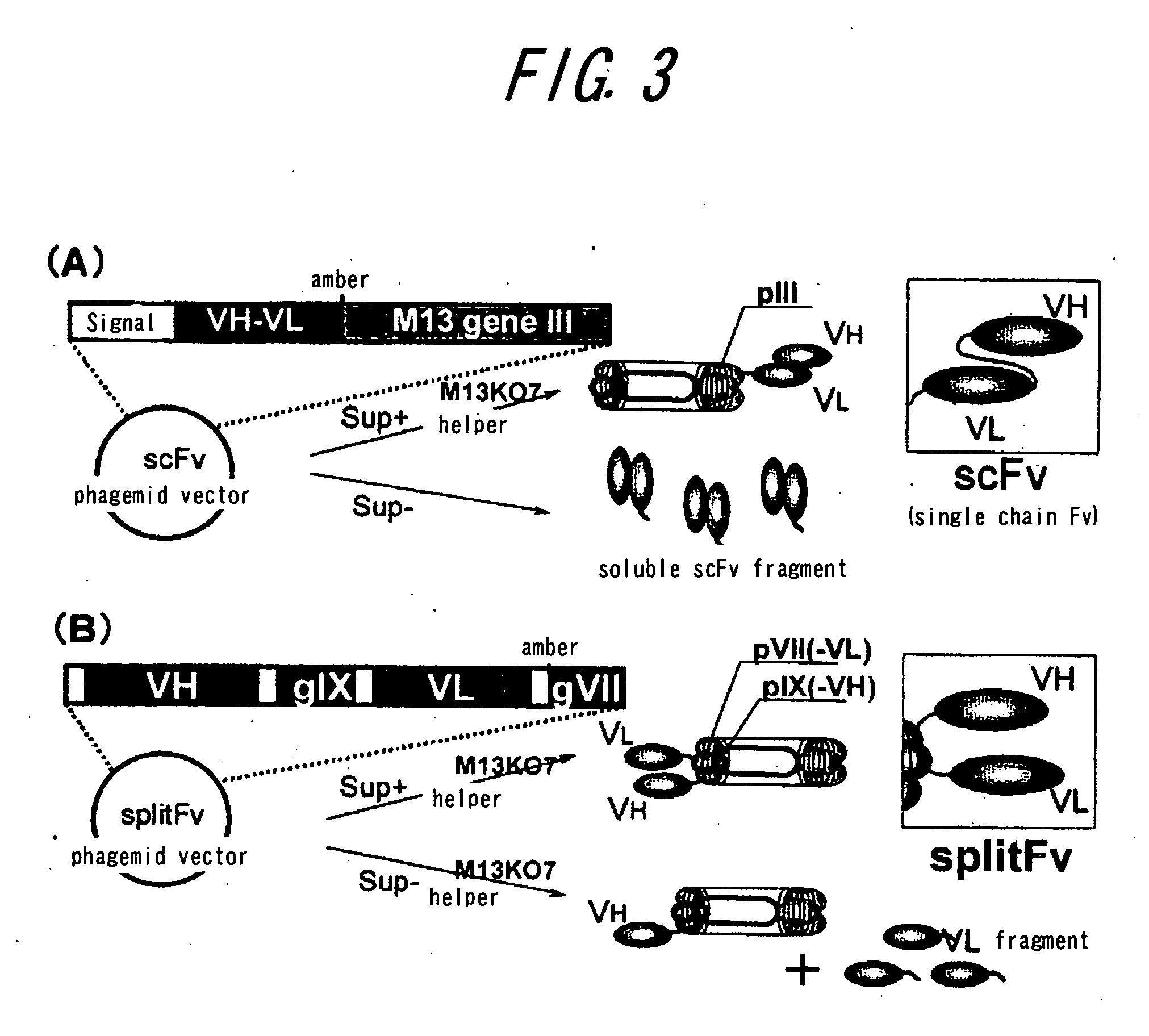Method of assaying interaction between proteins
a protein and interaction technology, applied in the field of assaying interaction between proteins, can solve the problems of inability to evaluate the interaction between vh/vl, the inability to prepare humanized antibodies, and the inability to detect the presence of toxic molecule or self-molecule,
- Summary
- Abstract
- Description
- Claims
- Application Information
AI Technical Summary
Benefits of technology
Problems solved by technology
Method used
Image
Examples
example 1
(a) Construction of a Phagemid Vector Displaying Gene Encoding Anti-Lysozyme Antibody HyHEL-10 on g7 / g9
[0077] Necessary fragments were prepared by polymerase chain reaction (PCR), and they were ligated to prepare the desired phagemid vectors. The condition for PCR was as summarized in Table 1 below. The reaction condition of PCR described in Table 1 consisted of (94° C., 5 min)×1, (94° C., 30 sec; 55° C., 30 sec; 72° C., 1 min)×35, and (72° C., 8 min)×1. All of the DNA polymerase used was KOD polymerase (2.5 units / 100 μl, Toyobo, Osaka).
TABLE 1backforwardprimerprimertemplateVHM13RVVH1for2XpCANTAB-5E / HyHEL-10VLVK2BackReverse SEQpCANTAB-5E / HyHEL-10g9-ompA(linker)LinkBackLinkForpHSG397 / g9-ompAVH-linkerM13RVLinkForVH, linkerLinker-VLLinkBackReverse SEQlinker, VLVH-linker-VLM13RVReverse SEQVH-linker, linker-VL
[0078] Cloning of ompA-FLAG
[0079] The genes encoding E. coli ompA secretion signal sequence and FLAG tag sequence located at the N-terminal of VL were amplified by PCR using a ...
example 2
[0128] HyHEL-10 is suitable for open sandwich method while D1.3 is not suitable for its strong VH / VL interaction, though both are antibodies toward HEL. If amino acid residues involved in the VH / VL interaction were identified, the residues may replaced with the corresponding amino acid residues of an antibody applicable for the open sandwich method, thereby the open sandwich method could be applied to various antibodies. In addition, no systematic study has been made on the relationship between the VH / VL interaction and its binding ability to an antigen, or the sequence of the framework region of the antibody. The second framework region (FR2) locating at the VH / VL interface was noticed, and studies were performed on the following; in the case the residues in FR2 of VH and VL of HyHEL-10 are replaced by those derived from D1.3, whether or not the open sandwich method can be still applied for the resulting product, and how the VH / VL interaction would be altered from that of correspon...
PUM
| Property | Measurement | Unit |
|---|---|---|
| volume | aaaaa | aaaaa |
| concentration | aaaaa | aaaaa |
| concentration | aaaaa | aaaaa |
Abstract
Description
Claims
Application Information
 Login to View More
Login to View More - R&D
- Intellectual Property
- Life Sciences
- Materials
- Tech Scout
- Unparalleled Data Quality
- Higher Quality Content
- 60% Fewer Hallucinations
Browse by: Latest US Patents, China's latest patents, Technical Efficacy Thesaurus, Application Domain, Technology Topic, Popular Technical Reports.
© 2025 PatSnap. All rights reserved.Legal|Privacy policy|Modern Slavery Act Transparency Statement|Sitemap|About US| Contact US: help@patsnap.com



